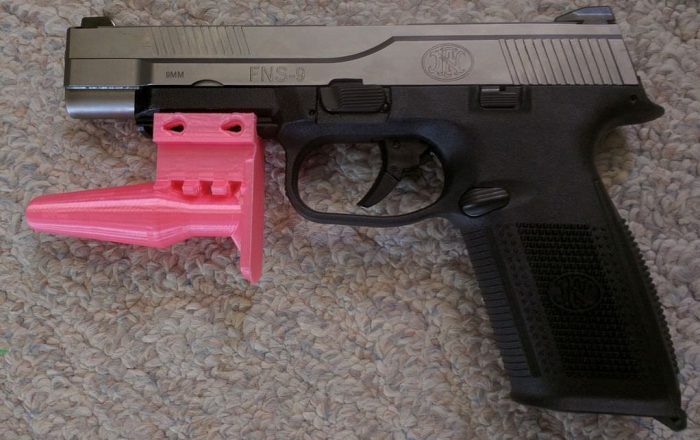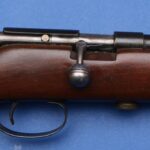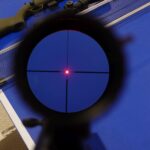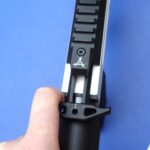I thought I’d write a quick little article on some common mistakes that many new gun owners make so that I could prevent others from following the same path. I’m going to avoid the legal and safety issues that new gun owners need to learn, because that would be a whole article on its own.
If I’m being honest, these are mostly just things I notice that bug me.
Buying a nice case and picking foam for 1 rifle
It breaks my heart to see a new gun owner with their 1 rifle perfectly inletted in the center of a large $400 rifle case. Many of the larger rifle cases will fit another long gun, or a pistol, or both. BUT, you need to inlet your case so you can fit those other firearms.
Please don’t inlet your huge double rifle case for your 1 hunting rifle. Think of the future when you’re going to have more firearms, and plan for better use of that space. For god sakes, don’t inlet your mags in there too. Mags go in the range bag unless you shoot 1 sport and know you’ll always shoot that sport until the end of time. Then you might want to inlet your mags into the case foam.
Mounting a rifle scope too high
Most traditional rifles should have the scope mounted as low as practical without having the front or rear of the scope contact the barrel or bolt handle. Getting the front of the scope about a half inch above the barrel is perfect. For AR’s and similar rifles that have straight buttstocks that are in-line with the barrel, you’ll need a much higher mount.
The reason for this is cheek weld. A well fitted rifle is one you can get a decent cheek weld on. If your scope is sky high, you may have a chin weld instead. If you have to mount the scope high, consider getting an add-on cheek rest that helps you get a decent cheek weld back.
“My handgun hits low and left”
No it doesn’t, you’re anticipating the recoil and pushing the round. Recoil anticipation, aka flinching, is a VERY common issue among handgun shooters, doubly so with handgun shooters who haven’t taken any courses and can’t self-diagnose the issue.
You can diagnose this issue if you see a cone of shots going down and to the left on your target. Some people will see a straight left or straight down spray. If you’re left handed, you’ll see this as down and to the right instead.
Don’t adjust your sights to your flinch, because your flinch is inconsistent. Practice ball and dummy drills, dry fire, or go to a handgun course. Don’t consult one of those wheels if you haven’t taken a course.

Magnum hunting rifles for close range
If you hunt in Ontario, Quebec, New Brunswick, or any other highly wooded areas, you’ll probably never take a further shot than 100 meters. And if that’s the case, you don’t need a magnum rifle. Cartridges like 300 Win Mag, 300 RUM, 7mm Rem Mag, are louder, kick a lot harder, are more expensive, heavier, and will NOT kill the animal deader. What they’re better at is delivering a lot of energy with flat trajectories that are great for Moose and Elk at long range. Check out my article on common hunting cartridges to see the ballistics differences with more practical cartridges.
Buying 1 gun that can do everything
Some people try to research and analyze the heck out of their gun purchases, which is cool, but others try to hit too many goals with that gun. A semi-auto hunting rifle that’s also a good long range range rig, that can use surplus ammo and is ~$500 is too much to ask of 1 gun and you’ll get some really bad compromises trying to get there.
A big game rifle in 308 could serve double duty as a long range target rifle, but the best long range rifles are heavy and the best hunting rifles are light, so you’ll need to compromise somewhere on weight, among other things.
If you’re worried that a “beginner gun” won’t be fun or useful for the long term, buy used. Guns hold on to their value for a long time, so if you need to, you can sell them at a pretty minor loss. Some types of guns take a 10-30% loss when they go from new->used, used guns don’t have that problem.
This is especially true for handguns, where long-wearing finishes keep all but the most horrible abuse from doing any damage. Most 5 year old Glocks in Canada will be in great condition because the finish is hard-wearing and most Glocks in Canada are taken to the range and back, not holster worn.
Buying the first thing you see
Shop around a bit. Go in-store, see what prices are like online: you might be surprised to see a difference of $100-200. Look up some reviews from some credible people (a good review should have both pros AND cons), see if the gun will do what you want it to. If you get a new gun at a great price, you will not lose much or any money when you sell it on the secondhand market.
Bad storage
One of your first purchases should be a gun safe or cabinet. The Canadian Tire Stack-Ons 8 gun safes go on sale once in a while for $100-$150. Leaving guns in foam cases with any humidity or moisture is a recipe for disaster: they will rust because the foam will keep the moisture trapped with the gun. You can supplement your gun safe or cabinet with a big silica gel pack to keep moisture down if your safe is in the basement or somewhere humid.
Safes and cabinets are much more convenient and secure than having rifles in cases or trigger locked in a closet.
Crappy holsters
In Canada, we use handgun holsters for competition or target shooting at the range. The most practical style of holster for this purpose are outside the waistband (OWB) Kydex or other plastic holsters as well as “race” holsters. The multifit textile ones are awful. The Safariland GLS is a fantastic $50 holster because it’s secure, easy to use, and you can use 1 holster with many different pistols.
Getting advice from dipshits
The great thing about firearms owners is that they’re happy to share their experience. The terrible thing about firearms owners, is that they’re happy to share their experience, even if they don’t really know much. It’s hard for new gun owners to figure out which advice is solid, and when they’re getting advice from someone they shouldn’t.
Good advice will usually come with more questions, “What’s your budget?” “What do you intend on using it for?”, “What distance are you shooting?”, “What’s your experience level?”. If you’re looking for a recommendation, try to include this kind of pertinent information in your request. If you ask at a gun store and they start putting guns in your hands instead of asking these questions, they’re not helping, they’re just selling.
If you’re getting advice for competition firearms, see if the people giving you advice are Range Officers for those competitions, or if they place well at matches or place at the bottom (most matches and match results these days are publicly available on Practiscore). The best shooters are not always the most knowledgeable, but they probably have some solid first-hand and second-hand experience of which guns work and which stink, and what’s worth spending money on for gains and what’s not.
If you’re looking for advice on hunting rifles or cartridges, bless your heart because you’re going to get all sorts of terrible advice.






